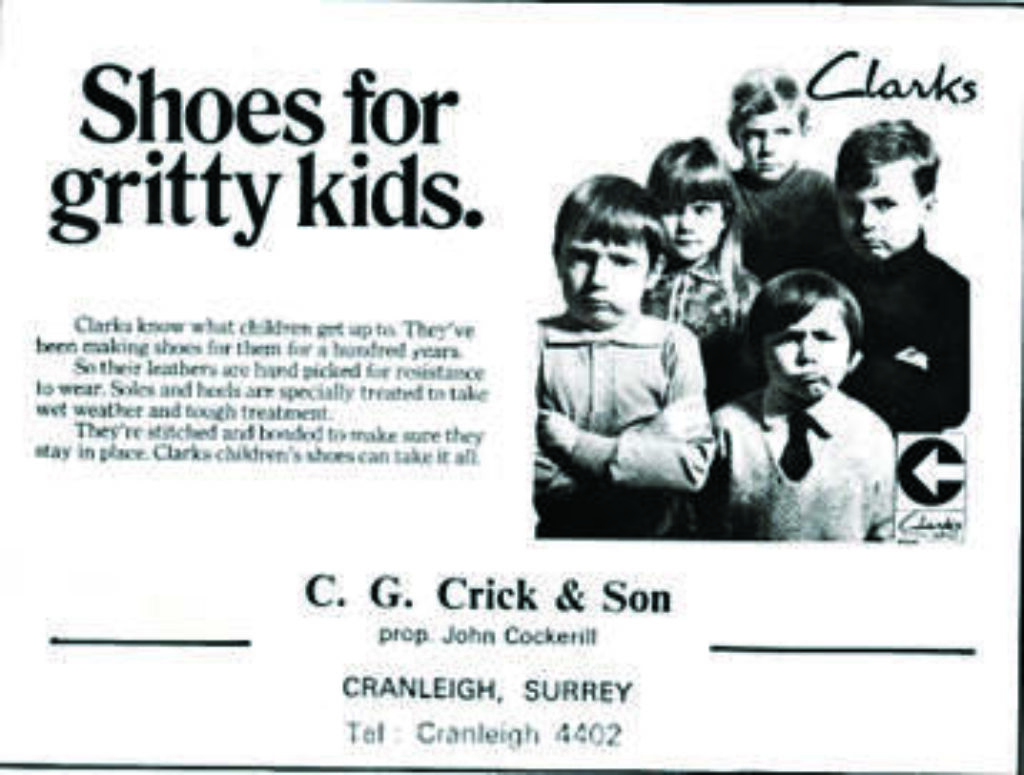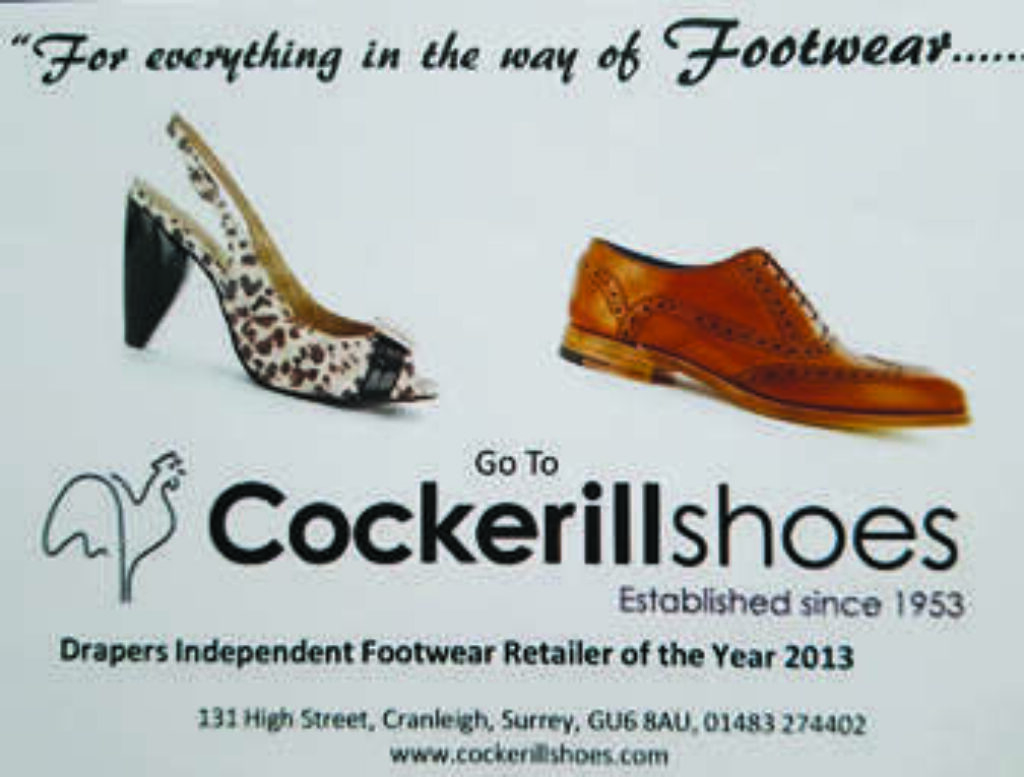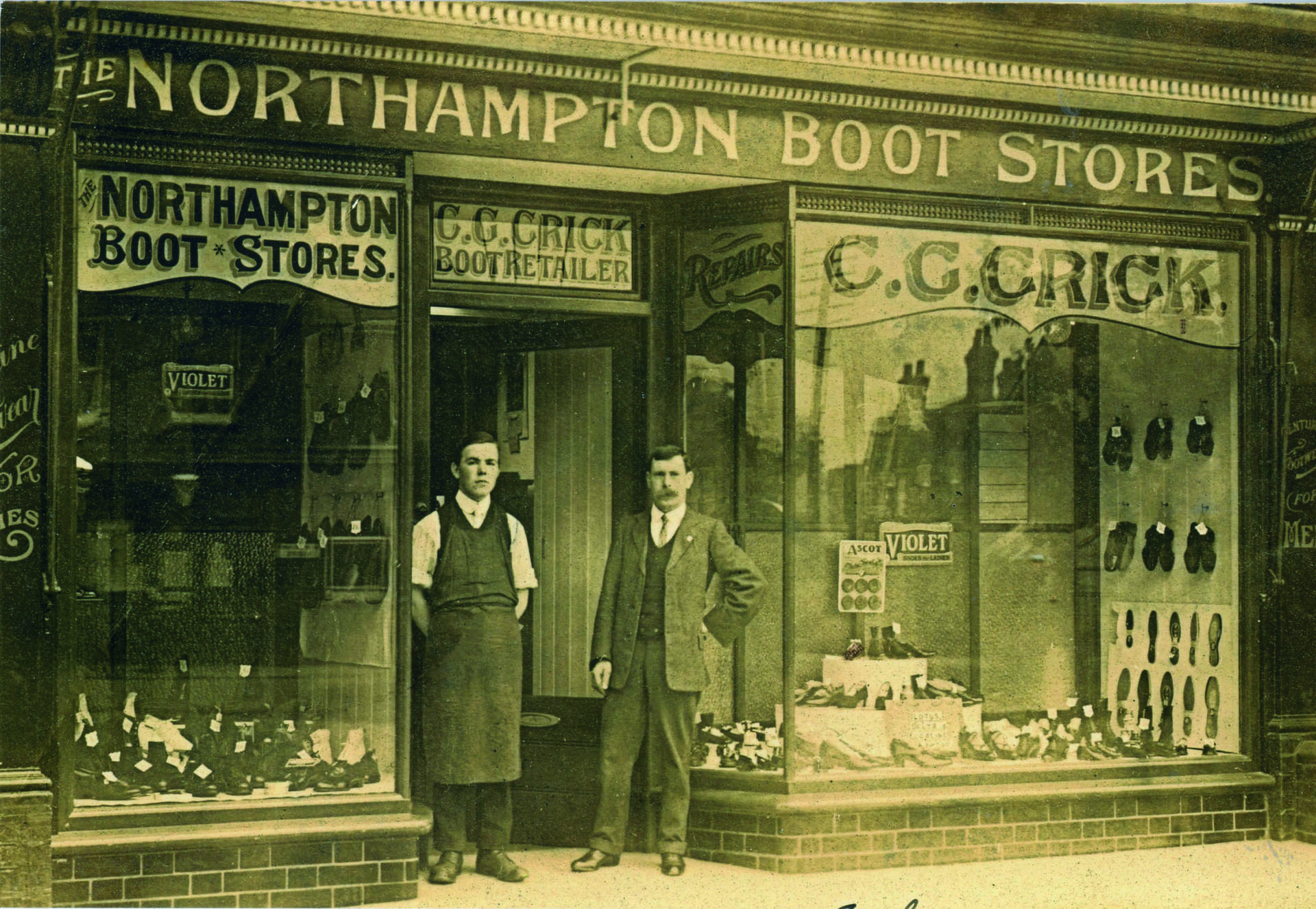
by Joy Horn (Main Photo – Charles Crick with his apprentice, Charlie Croxford, in 1915)
This is the story of Charles Crick, his family and the shoe shop he founded.
Charles Crick moved to Cranleigh in 1910 from Rushden, Northamptonshire, the centre of British shoemaking: you may recall that Northampton Town Football Club has the nickname of ‘The Cobblers’. His father owned a major boot and shoe factory there, employing about 90 people. Charles had been a ‘clicker’, cutting shoe uppers from sheets of leather, one of the most highly skilled jobs and the best paid in the industry. What brought him, his wife and 13-year-old son to Cranleigh is not known, but the building in 1906 of the local Wesleyan Methodist church may have influenced him, as he became its lifelong supporter.
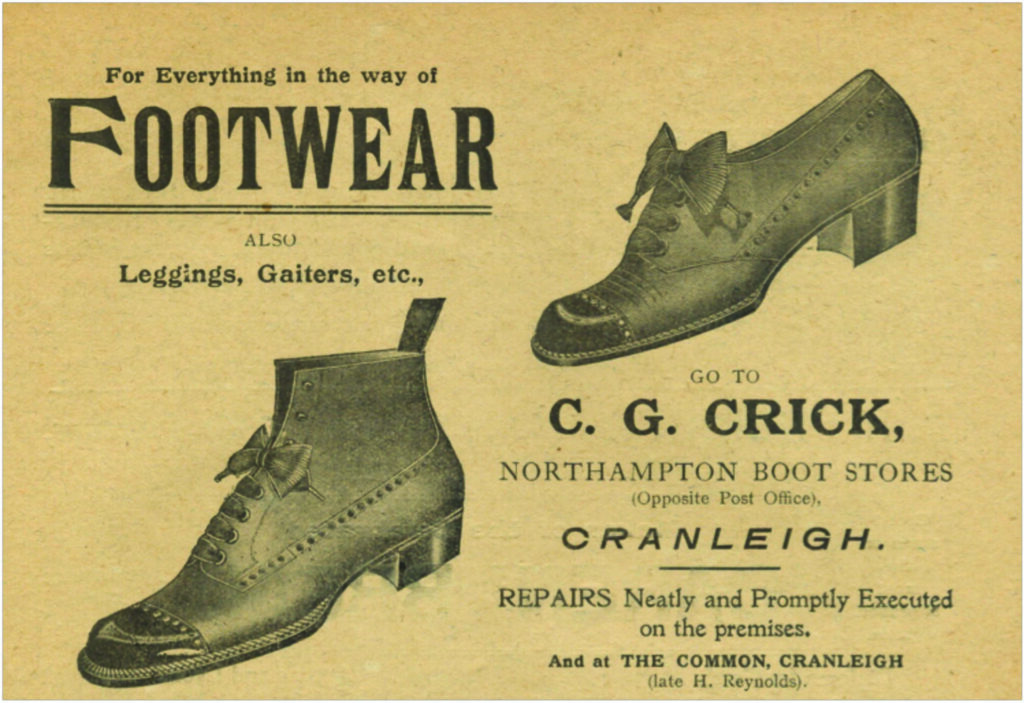
He rented a shop in the High Street from Henry Rowland, whose grocer’s shop was next door. The Northampton Boot Stores was at the right-hand end of the row of shops constructed in front of Ivy Hall Farm, and the frieze above the shop front can still be seen today on the Oxfam gift shop. Cranleigh had several cobblers and shoemakers who worked from their homes or in various huts, but had never had a shoe shop like this! Beautiful, fashionable, ready-made shoes, boots and slippers, most of them from factories in Northants, filled the large plate-glass shop windows. Charles also advertised that shoe repairs were ‘neatly and promptly executed on the premises’.
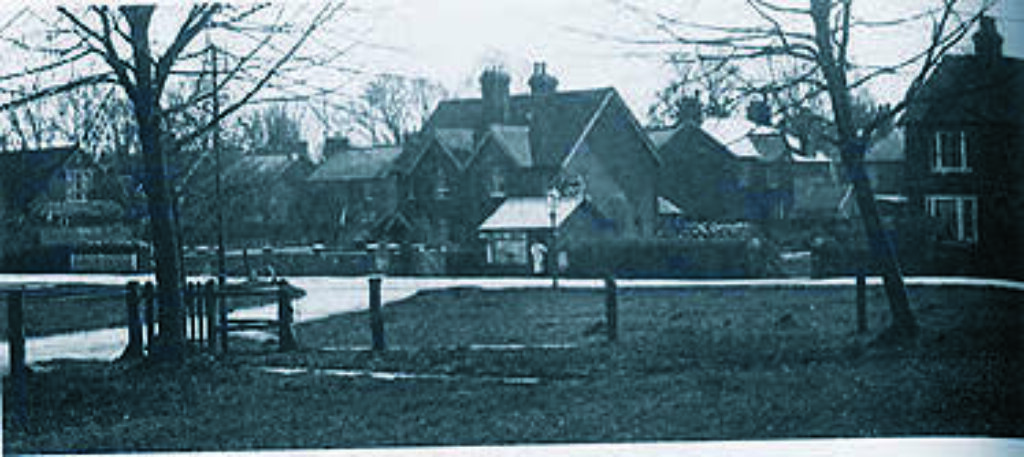
The first week’s takings amounted to a modest £8 1s 10d and the first year’s average per week was £9 5s 9d. This rose steadily to over £42 by 1922. Customers with personal accounts included Lady Bonham of Knowle, Raymond Swallow of Bookhurst Hill Pottery, A.B. Johnston of New Park, General Sir Arthur Bingley of The Causey and William Heath Robinson, the artist and cartoonist of ‘The Copse’, Horsham Road. Such people did not handle cash, but asked for purchases to be ‘put on their account’ and received an invoice at the end of each month.
The shop was open six days a week, with a half-day on Wednesday. In Christmas week they stayed open to 8.30 or 9.00pm. Mrs Annie Crick served in the shop and they employed men to help Charles with the repairs, at 6s or 7s per week. As the business grew, a shop assistant was taken on, at 3s 6d per week, and a delivery boy, on bicycle, at £2 7s.
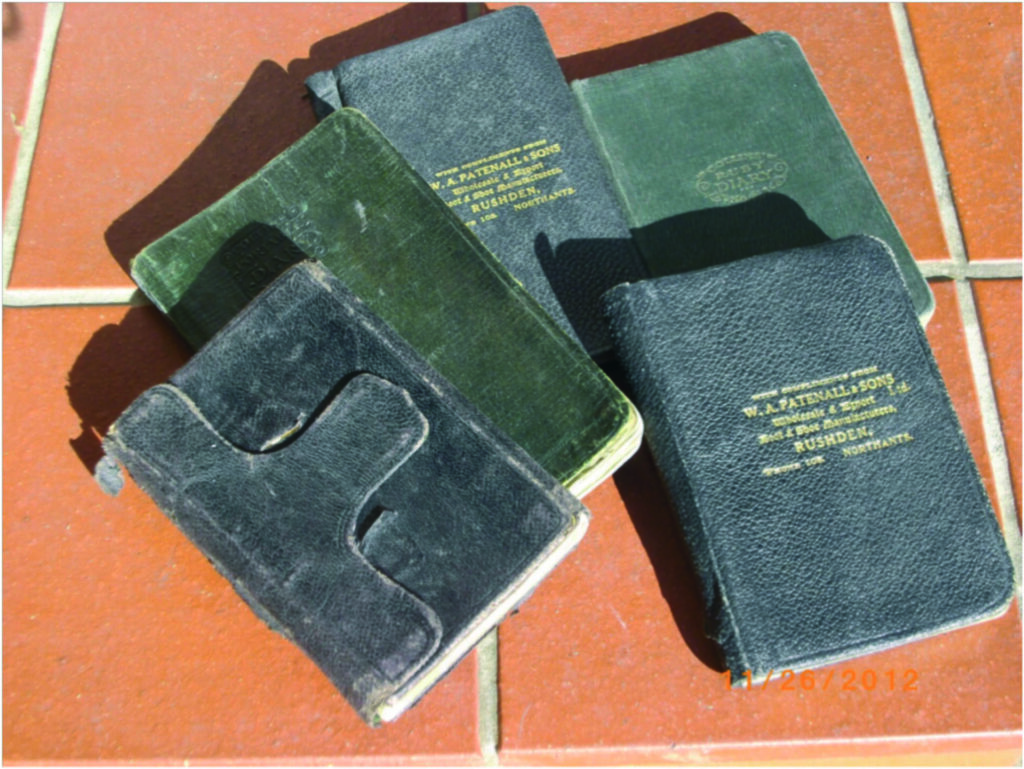
The first accounts book shows payments to Miss James of Brookmead for piano lessons for young Rennie Crick and subscription payments to the Lady Peek Institute, where father and son could play games such as billiards. In 1915, when he was 18, Rennie enlisted in the Royal Army Medical Corps and served in Gallipoli, Egypt and on the Western Front. His war diaries, meticulously kept in a series of small volumes, are an enormously valuable source of information. On demobilisation, Rennie left his pre-war job with a Reigate printer and joined his father’s shoe business.
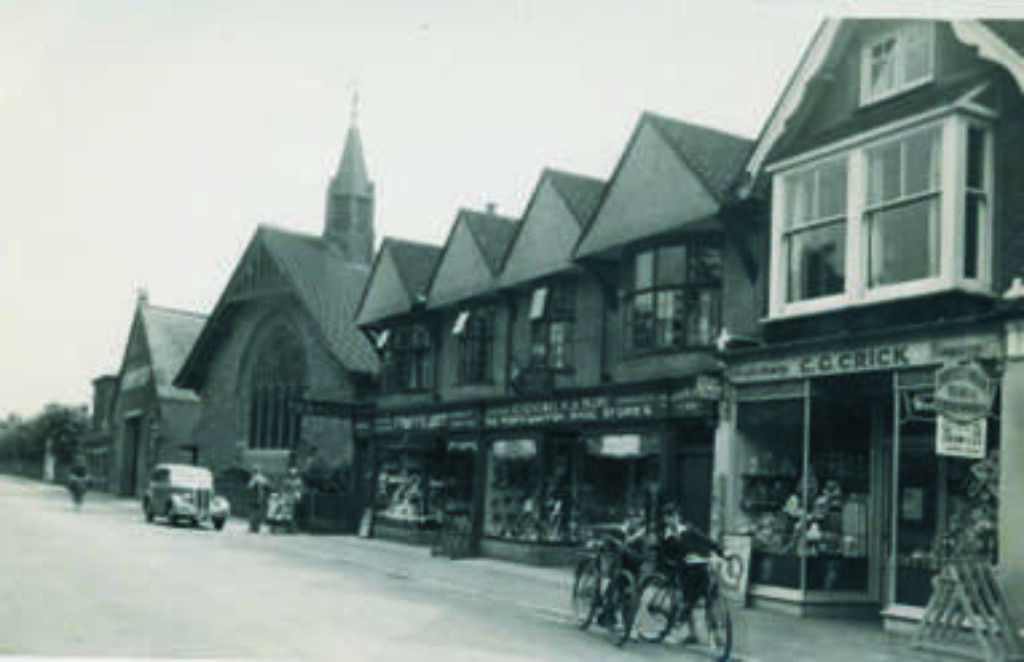
Close to the Wesleyan Methodist church was Dorset House, a tearoom and confectionery shop. When this became vacant, Charles Crick took it over in 1924. In 1925, he moved his boot and shoe business next to the tearoom, in a newly-built row of shops facing the Common, where Tollhouse Cottages had previously been (and where Glamorous Nails now is). The new shop was modern, double fronted and more spacious than the previous one. The same phone number (Cranleigh 102) did service for both the shoe shop and the tearoom. Charles and Annie Crick lived over the shoe shop. Rennie, who had recently married shop assistant Nellie Balls, paid 10s a week rent to occupy the flat above the tearoom in Dorset House. His piano lessons had paid off and he was by now organist at the Wesleyan church.
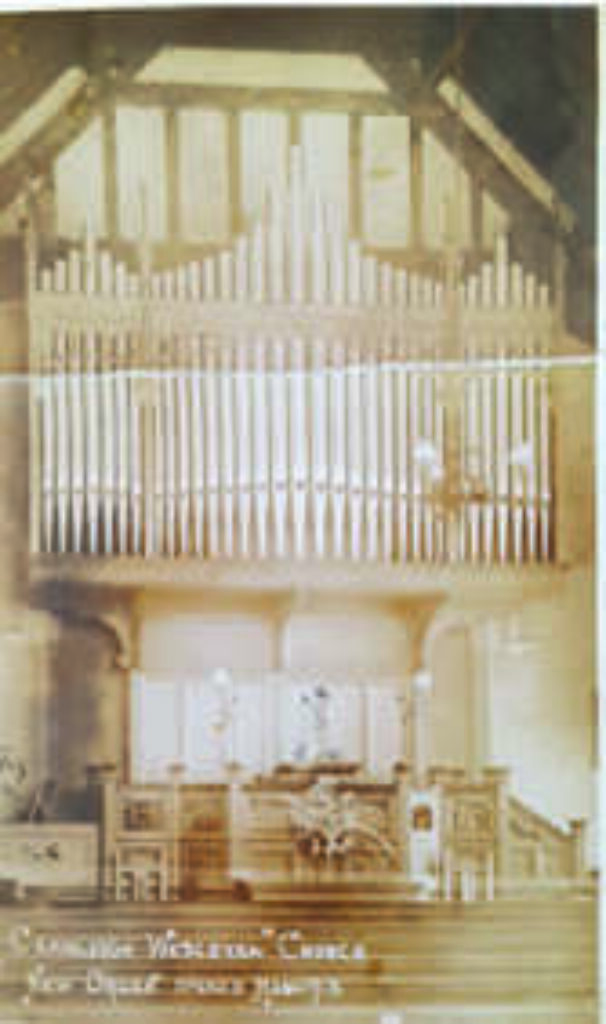
In 1928, when Charles Crick was 60, Rennie was taken into partnership in the shoe business, and it was henceforth known as ‘C.G. Crick & Son’. Both Charles and Annie Crick died in 1958 and in 1965 the tearoom was sold.
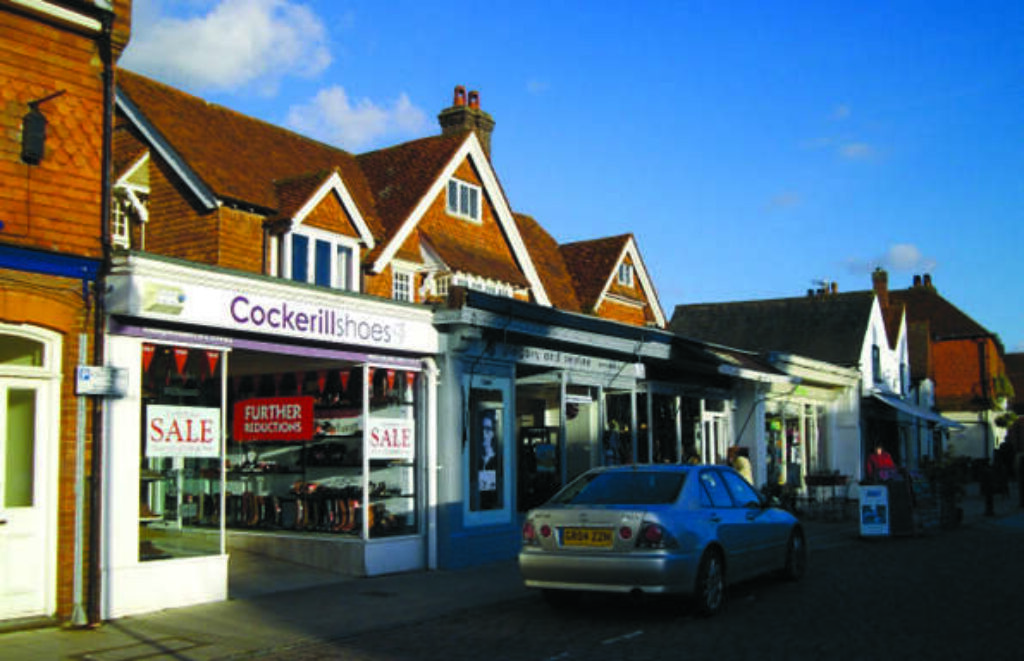
In the 1960s John Cockerill became the shoe-shop proprietor, but the family connection was continued by Charles Crick’s great-granddaughter, Angela Crick (later Vaz), who began working in the shop in 1977. In the 1980s, it moved back to the village centre, just three doors from the original shop. Cockerillshoes, with Angela Vaz as manageress, was voted ‘Independent Footwear Retailer of the Year 2013′.
Cockerillshoes closed around 2020, after a century here. Cranleigh was left without a shoe shop once again, but happily still with an excellent cobbler and shoe-repairer whose shop is in Village Way.
I am indebted to Charles Crick’s grandson, the late Colin Crick, for his kindness in letting me see account books and invaluable family papers and diaries.
The Cranleigh History Society meets on the second Thursday of each month at 8pm in the Band Room. The next meeting is on Thursday March 13th, when Iain Kennedy will speak on ‘Liquid history: the River Thames’.

